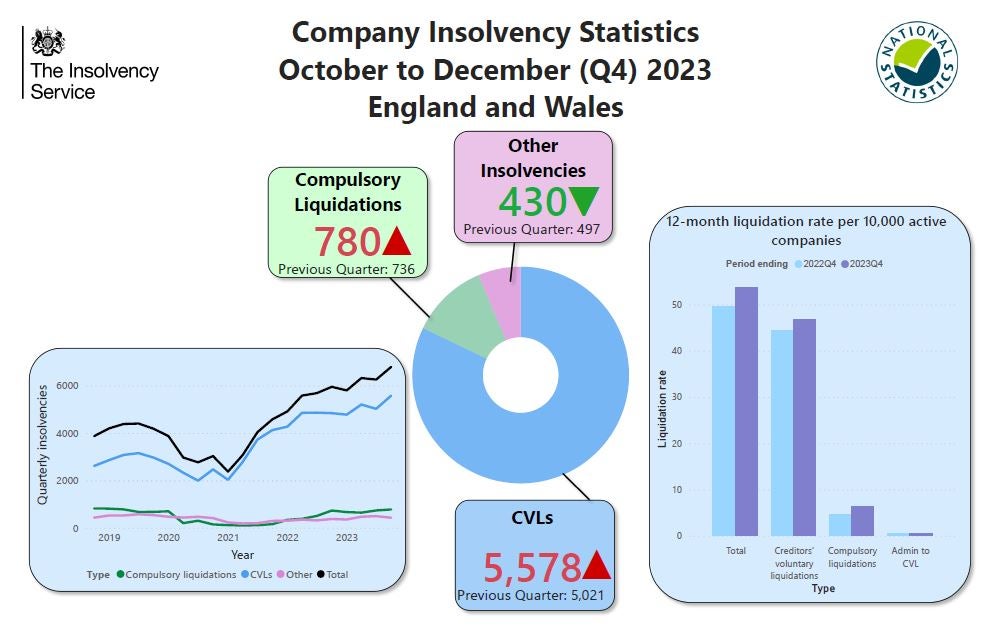
In a stark indication of economic challenges, the UK witnessed a surge in registered company insolvencies in 2023, reaching the highest annual number since 1993.
According to the latest data from the government, a total of 25,158 companies faced insolvency, marking a concerning trend.

The breakdown of insolvency types reveals a complex landscape.
Creditors’ voluntary liquidations (CVLs) took the lead, comprising 20,577 cases and witnessing a notable 9% increase from the previous year. This surge propelled CVLs to a new record high, dating back to 1960.
Compulsory liquidations, administrations, and company voluntary arrangements (CVAs) also saw significant upticks in 2023.
Compulsory liquidations increased by 44%, administrations by 27%, and CVAs by a staggering 67%, all surpassing the figures recorded in 2022.
How well do you really know your competitors?
Access the most comprehensive Company Profiles on the market, powered by GlobalData. Save hours of research. Gain competitive edge.

Thank you!
Your download email will arrive shortly
Not ready to buy yet? Download a free sample
We are confident about the unique quality of our Company Profiles. However, we want you to make the most beneficial decision for your business, so we offer a free sample that you can download by submitting the below form
By GlobalDataThe statistics translate to one in 186 active companies entering insolvent liquidation in 2023, with a rate of 53.7 per 10,000 active companies. This marks an increase from the 2022 rate of 49.6 per 10,000 active companies and represents the highest level since Q3 2014.
It’s worth noting that while the volume of company insolvencies reached a 30-year high in 2023, the number of companies on the Companies House register has grown over time.
Consequently, the 2023 insolvency rate, although concerning, remains considerably lower than the peak rate of 94.8 insolvencies per 10,000 active companies during the 2008/09 recession.
As the business landscape grapples with ongoing economic uncertainties, these insolvency figures underscore the challenges faced by companies, highlighting the need for a closer examination of the economic factors contributing to this concerning trend.
Derek Ryan, Managing Director of Bibby Financial Services UK, said: “Another peak in company insolvencies is a worrying sign of more trouble ahead, with SMEs in the eye of the storm. Squeezed at both ends by record high interest rates and inflation, the UK’s small businesses are also struggling to find the finance they need, as traditional lenders are increasingly retreating from the market in all sectors. Our research found two-thirds (67%) say banks are less likely to lend to them today.
“But the impact of this extends beyond the SME community, threatening the economic growth of the UK as a whole. It’s critical that both public and private sectors work together to incentivise growth and rebuild business confidence.”







